Abstract
The concerns of medical and community officials about responsible pet ownership have increased. Before a practical solution can be found for irresponsible ownership and community health problems associated with pet populations, the public's attitudes on issues related to responsible pet ownership must be determined. Such issues include attitudes on dog and cat overpopulation, potential public health problems associated with pet populations, and methods of controlling pet populations and stray animals. Responses to a questionnaire were used to evaluate the attitudes of 910 pet owners and nonowners toward factors comprising responsible pet ownership. The median age of the respondents was 33 years; 414 (45 percent) were men, and 496 (55 percent) were women. At the time of the study, 18 percent owned a cat and a dog, 35 percent owned only a dog, 11 percent showed only a cat, and 36 percent were nonowners. Not only the sex of the respondent but also the category of pet ownership affected opinions on overpopulation of dogs and cats, nuisance and pollution problems associated with these animals, and methods of controlling pet populations in the community. For example, owners agreed strongly on family planning for pets, but a majority of male owners stated that they would not have their dogs neutered.
Full text
PDF
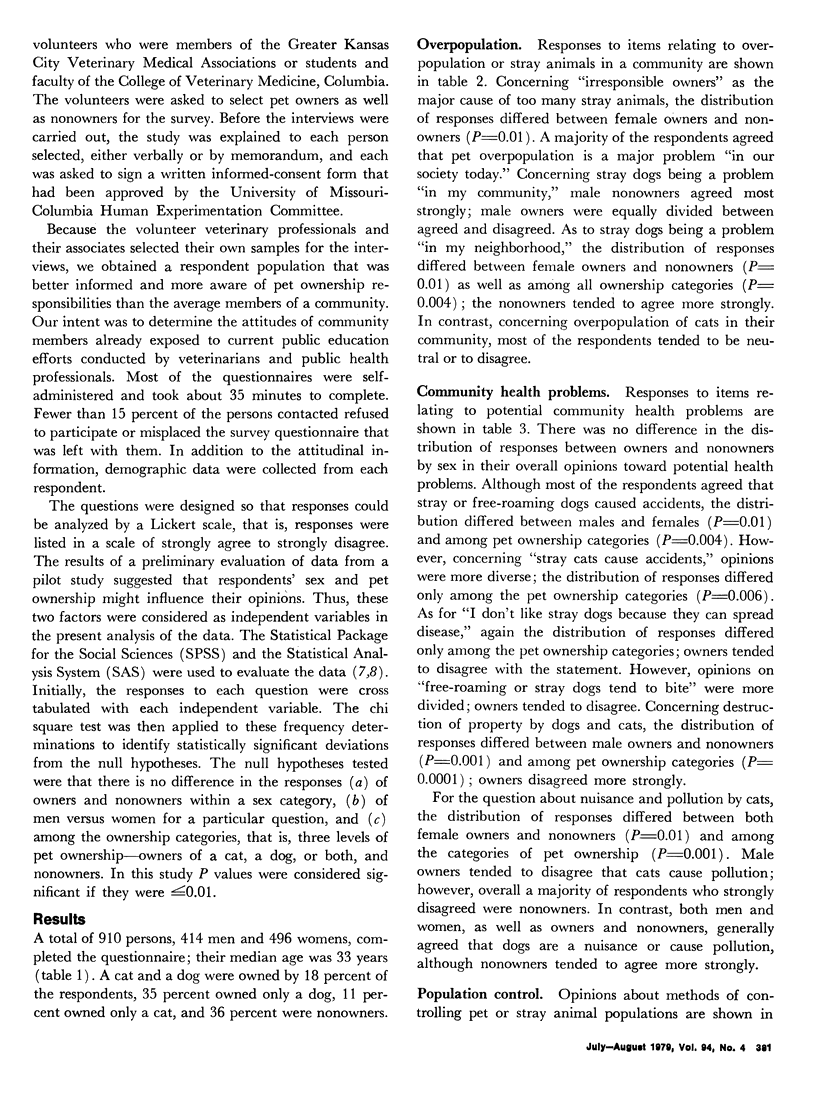

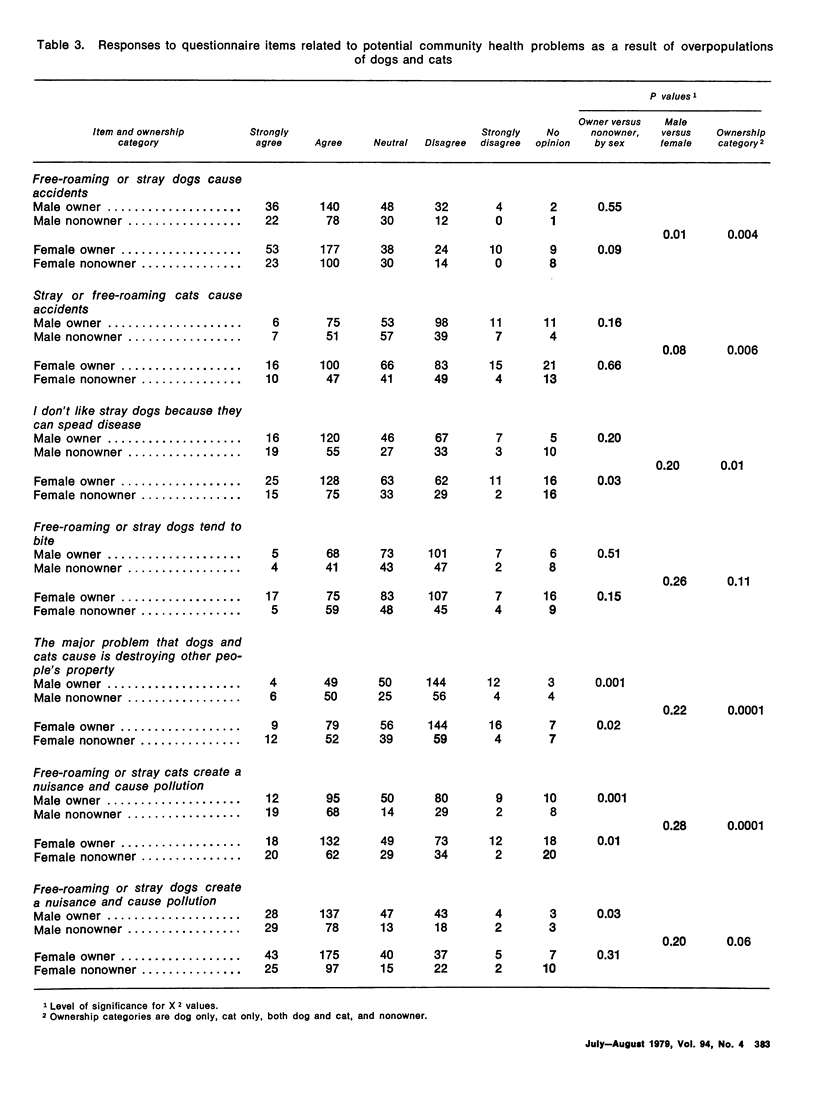
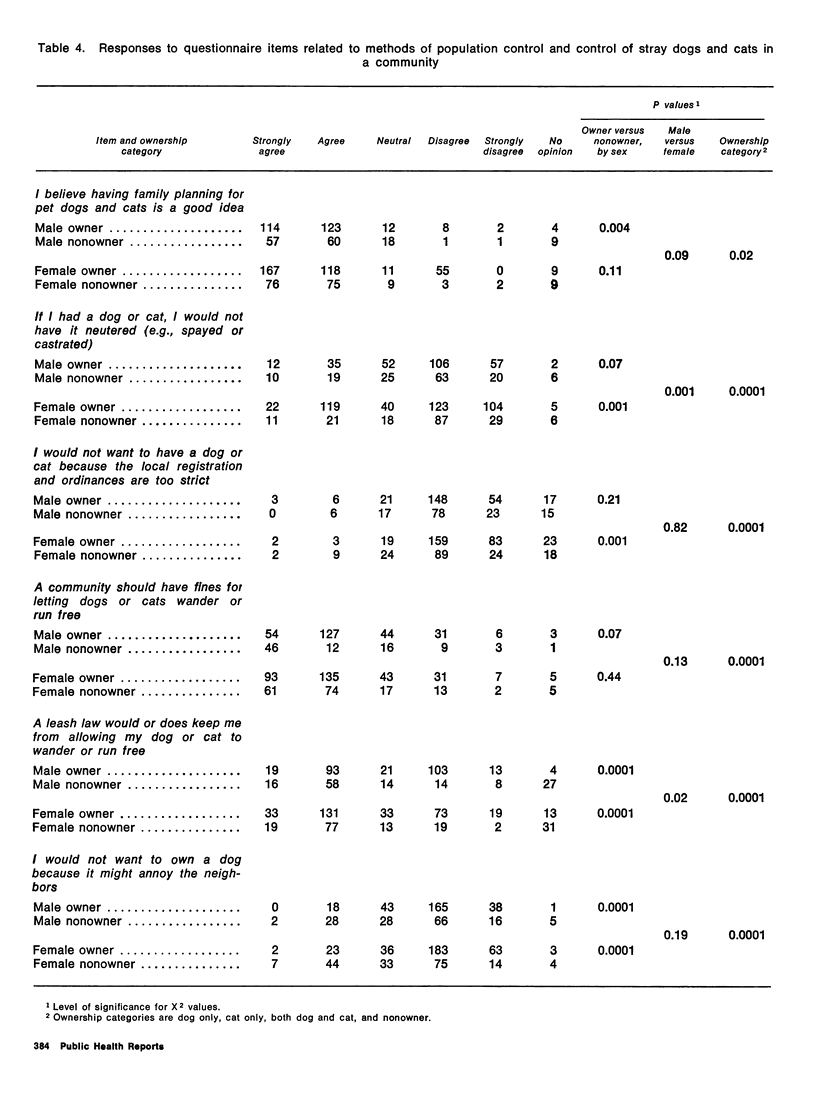
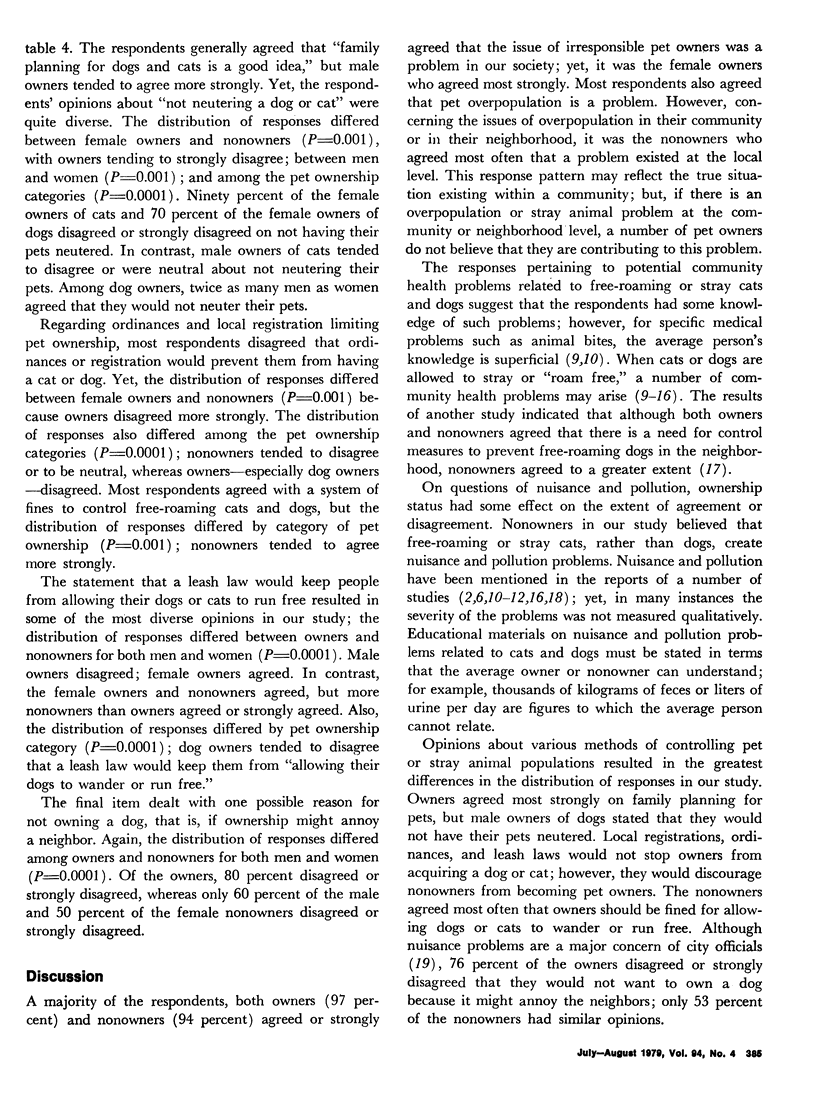
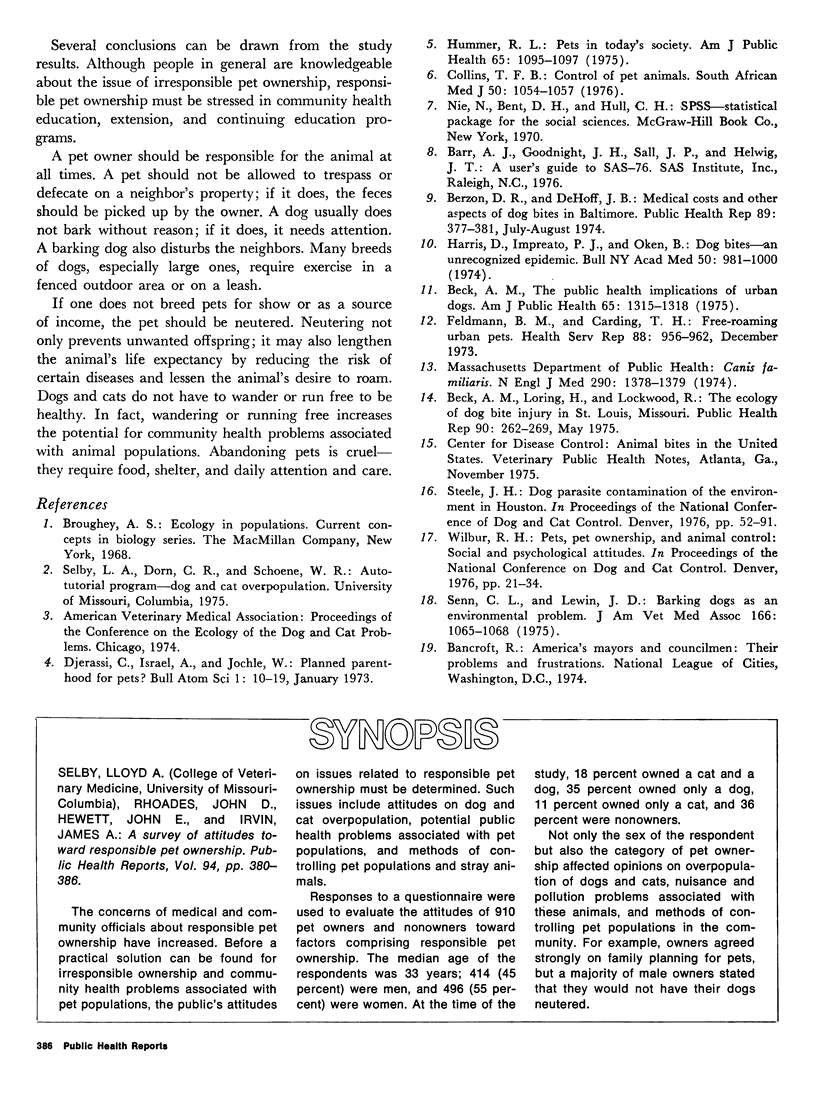
Selected References
These references are in PubMed. This may not be the complete list of references from this article.
- Beck A. M., Loring H., Lockwood R. The ecology of dog bite injury in St. Louis, Missouri. Public Health Rep. 1975 May-Jun;90(3):262–267. [PMC free article] [PubMed] [Google Scholar]
- Beck A. M. The public health implications of urban dogs. Am J Public Health. 1975 Dec;65(12):1315–1318. doi: 10.2105/ajph.65.12.1315. [DOI] [PMC free article] [PubMed] [Google Scholar]
- Berzon D. R., DeHoff J. B. Medical costs and other aspects of dog bites in Baltimore. Public Health Rep. 1974 Jul-Aug;89(4):377–381. [PMC free article] [PubMed] [Google Scholar]
- Collins T. F. Control of pet animals. S Afr Med J. 1976 Jun 26;50(27):1054–1057. [PubMed] [Google Scholar]
- Feldmann B. M., Carding T. H. Free-roaming urban pets. Health Serv Rep. 1973 Dec;88(10):956–962. [PMC free article] [PubMed] [Google Scholar]
- Harris D., Imperato P. J., Oken B. Dog bites--an unrecognized epidemic. Bull N Y Acad Med. 1974 Oct;50(9):981–1000. [PMC free article] [PubMed] [Google Scholar]
- Hummer R. L. Pets in today's society. Am J Public Health. 1975 Oct;65(10):1095–1098. doi: 10.2105/ajph.65.10.1095. [DOI] [PMC free article] [PubMed] [Google Scholar]
- Senn C. L., Lewin J. D. Barking dogs as an environmental problem. J Am Vet Med Assoc. 1975 Jun 1;166(11):1065–1068. [PubMed] [Google Scholar]


